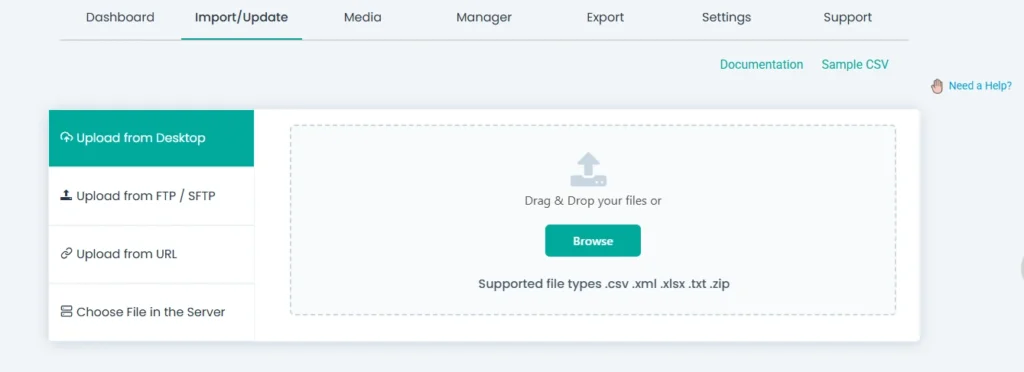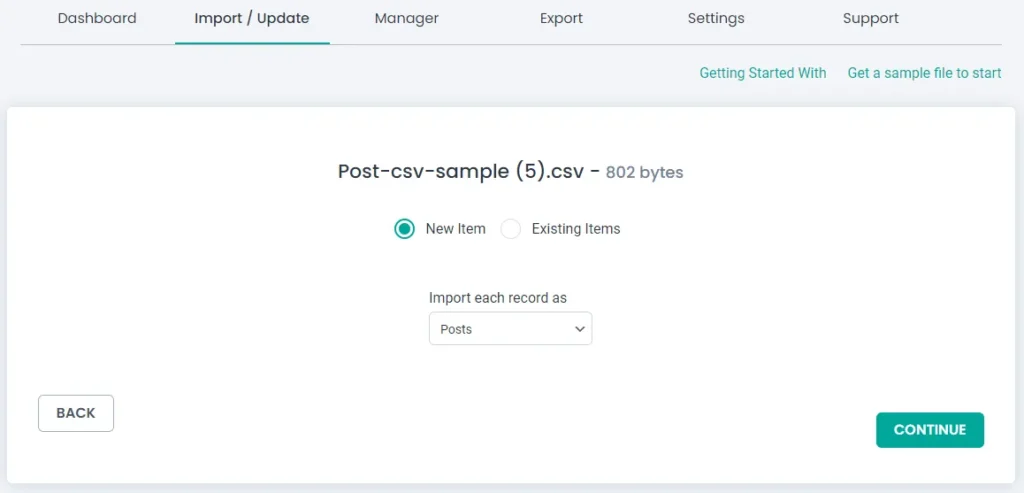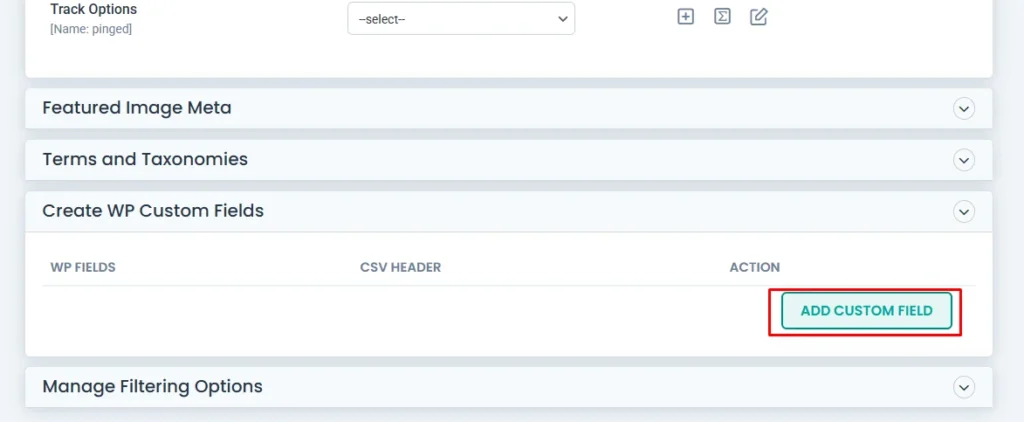WP Ultimate CSV Importer now supports importing serialized data directly into WordPress custom fields, even if they are created on the fly during the import process. This makes it easy to store complex data in a single meta key using the plugin’s intuitive interface.
Step-by-Step: How to Import Serialized Data into WordPress Custom Fields #
Step 1: Upload Your Import File
Navigate to Ultimate CSV Importer Pro → Import/Update in your WordPress dashboard. Upload your file (CSV, Excel, or XML) containing the data you want to import.

Step 2: Choose Post Type and Import Type
After upload, select your post type (e.g., post, page, or any custom post type).
Choose between Fresh Import or Update Content.

Click Continue to Step 3.
Step 3: Map Fields and Configure Serialized Data
In the Mapping area, scroll to the Create Custom Fields widget.

In the text box, enter the name of the custom field you want to create. Next to it, click the dropdown and choose Header Manipulation. Then select Serialized option from the list of actions beside.

A pop up will appear allowing you to add keys and values.

Click + Add Another to insert additional key-value pairs.
Each key represents an array key, and its corresponding value will be serialized together.
For example, adding color: Blue and size: Medium will serialize to:
a:2:{s:5:”color”;s:4:”Blue”;s:4:”size”;s:6:”Medium”;}
After adding all necessary key-value pairs, click Save.
At the end of the page, name the mapping and click Continue.
Step 4: Begin the Import
Configure any advanced options like media handling or rollback if needed.
Click Import to begin.
The plugin will serialize your entered key-value data and save it into the specified custom field for each post.
Once the import is completed, a confirmation popup will appear. You can verify the values directly in the Custom Fields section of the post editor or by inspecting the post meta.
Notes:
You can create multiple serialized custom fields by repeating the steps under the WordPress Custom Fields widget.
This method supports runtime custom field creation — no need to register fields manually.
Ensure your data does not include characters that could break serialization (e.g., unescaped quotes or line breaks).
